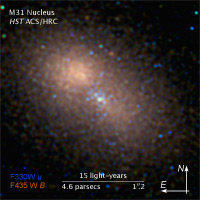A fitting honor: The National Radio Astronomy Observatory (NRAO) has renamed the recently upgraded thirty-one year old Very Large Array (VLA) after Karl Jansky, the man who invented radio astronomy.
Karl Guthe Jansky joined Bell Telephone Laboratories in New Jersey in 1928, immediately after receiving his undergraduate degree in physics. He was assigned the task of studying radio waves that interfered with the recently-opened transatlantic radiotelephone service. After designing and building advanced, specialized equipment, he made observations over the entire year of 1932 that allowed him to identify thunderstorms as major sources of radio interference, along with a much weaker, unidentified radio source. Careful study of this “strange hiss-type static” led to the conclusion that the radio waves originated from beyond our Solar System, and indeed came from the center of our Milky Way Galaxy.
His discovery was reported on the front page of the New York Times on May 5, 1933, and published in professional journals. Jansky thus opened an entirely new “window” on the Universe. Astronomers previously had been confined to observing those wavelengths of light that our eyes can see. “This discovery was like suddenly being able to see green light for the first time when we could only see blue before,” said Lo.

